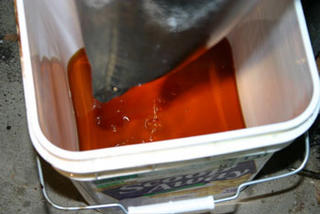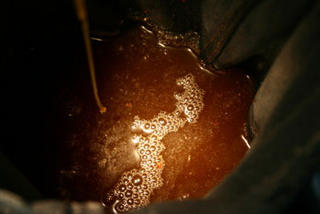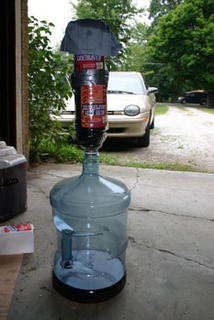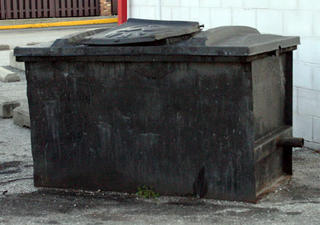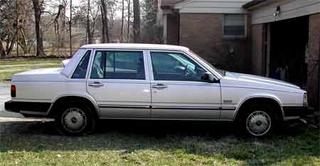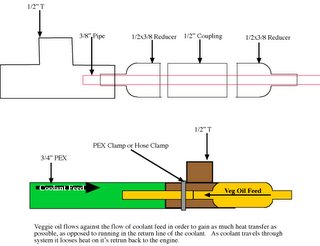
With WVO conversions there are basically two methods of running your "plumbing" from the second tank to the engine. One method is Hose-On-Hose (HOH), which utilizes individual hoses for each the feed and return of both engine coolant and veggie oil. This method utilizes the heat transfer by bundling the 4 hoses together and surrounding the hoses with pipe insulation.
Another method is Hose-In-Hose (HIH). This method you run a smaller diameter hose/pipe through a larger diameter hose/pipe. The smaller diameter hose is surrounded by the engine coolant and uses heat transfer to heat the veggio oil as well.
Both have their pros and cons. The HOH method you don't have the possibility of cross contamination due to a leaks as you would with a HIH. If your on a budget HOH system may be more expensive due to the amount of hose/pipe you would need. Also with the HOH may be less efficient in the heat transfer as HIH.
After much research and a first attempt I've decided to go with a Hose-In-Hose conversion. I think that the HIH system will provide me with a more effient heat transfer method and with veggie oil conversion that's important.
With that said here is a design of the basic "plumbing" using standard PEX tubing and copper fittings. More details to follow but I think the diagram is self explainatory.
